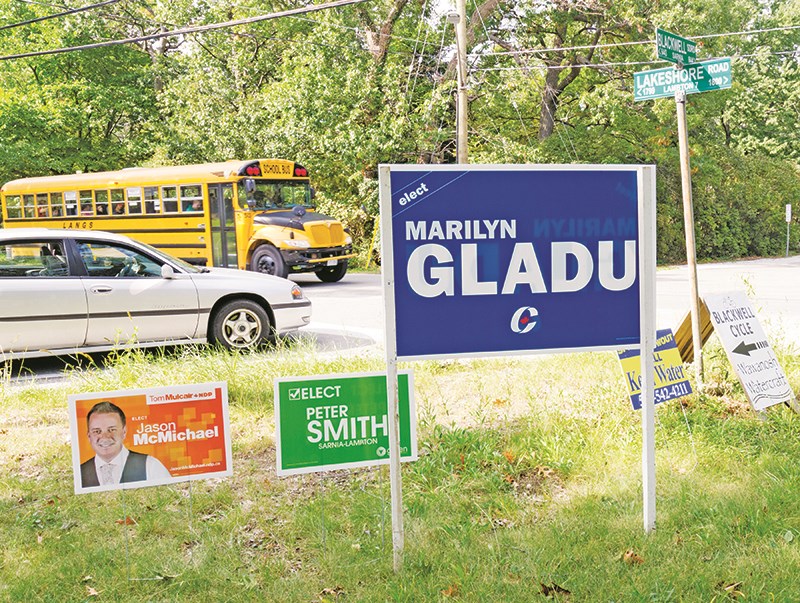Cathy Dobson
Just about every day volunteers with one federal party or another put election signs up at a city intersection or boulevard.
And just about every day, municipal bylaw enforcers pull out those signs and haul them back to city hall.
So what’s up with that?
This is the first federal election in which candidates have not been able to plant signs on city-owned property, explains Jane Cooper, Sarnia’s director of planning and building.
In previous campaigns, large collections of signs from every party would amass at key intersections like Michigan and Murphy, or Wellington and Finch.
But that’s no longer allowed, after the city adopted a new sign bylaw last year to reduce visual clutter.
At the beginning of this laboriously long election, the city issued a page of instructions to campaign workers. It broke down the rules so there could be no misunderstanding. We’re paraphrasing here, but this is the general idea:
Number 1: No signs within five metres of an intersection or three metres of a laneway.
Number 2: No signs on city property unless you have written approval from the city.
Number 3: Don’t install a sign using a tree, fence, light standard or pole.
The rules may seem straight forward, Jane Cooper said.
“(But) we’ve had lots of calls from various campaigns saying there are signs belonging to the other parties on boulevards and public property,” she said.
“My chaps do a regular sweep to collect them. It’s an ongoing problem, sometimes a daily occurrence.”
Cooper said initially the signs might have gone up on city property because no one knew better. Now she suspects there’s deliberate disregard for the bylaw.
“Of course, I understand if you’re a candidate you want to get as much publicity as you can, but going out to get signs every day is diverting us from other duties.”
Cooper calls it “a game of cat and mouse” where campaign workers sneak their signs onto boulevards, wait for them to be picked up by city workers, then go to city hall to pick them up, only to sneak them back onto another city-owned property.
“They put them in and we pull them out, repeatedly,” Cooper said. The city is determined to keep the sign clutter to a minimum and ensure the view is not obstructed at intersections.
The same goes in Point Edward where election signs on public property aren’t allowed without approval.
But in St. Clair Township, things are a little different. The township allows for election signs on publicly-owned boulevards and intersections, says CAO John Rodey.
“There just aren’t a lot of intersections where there is public property,” he said.
“We’re not seeing a lot of signs anywhere.”
